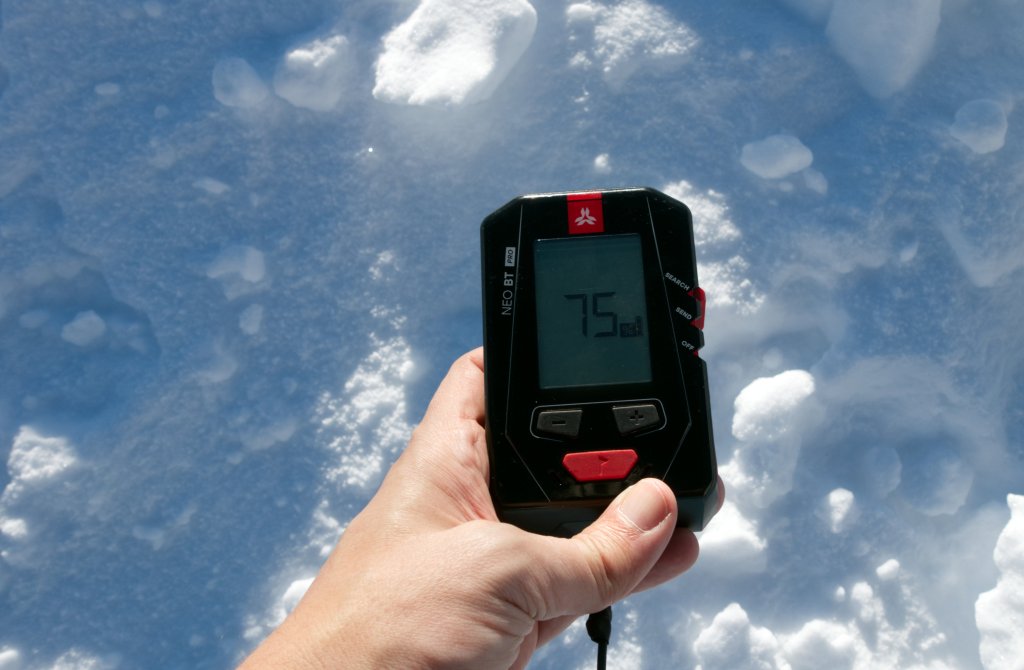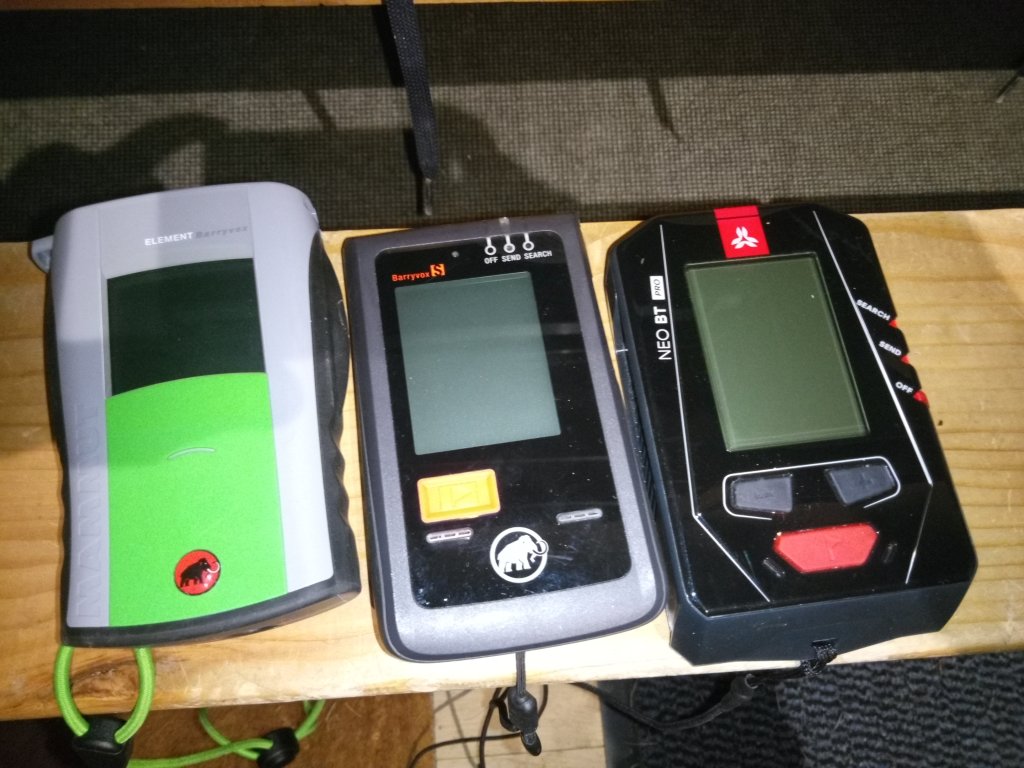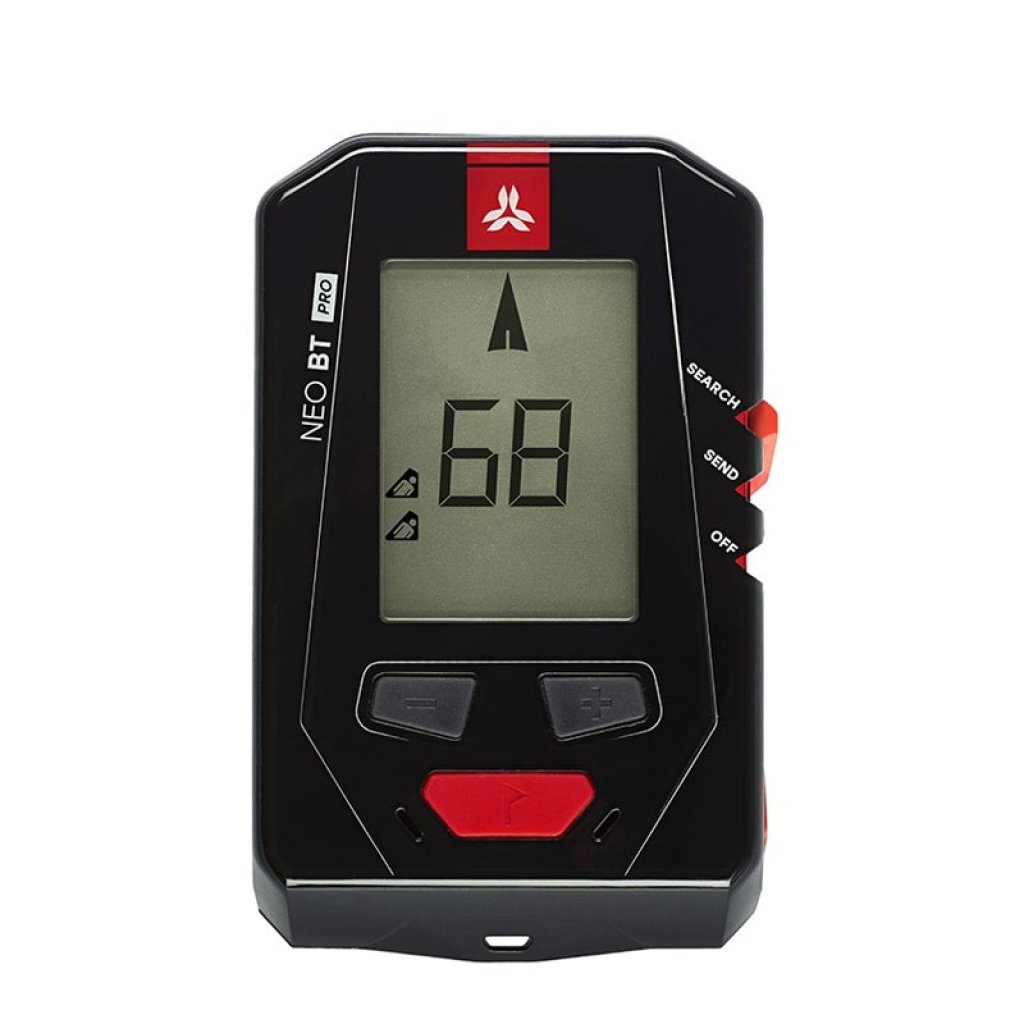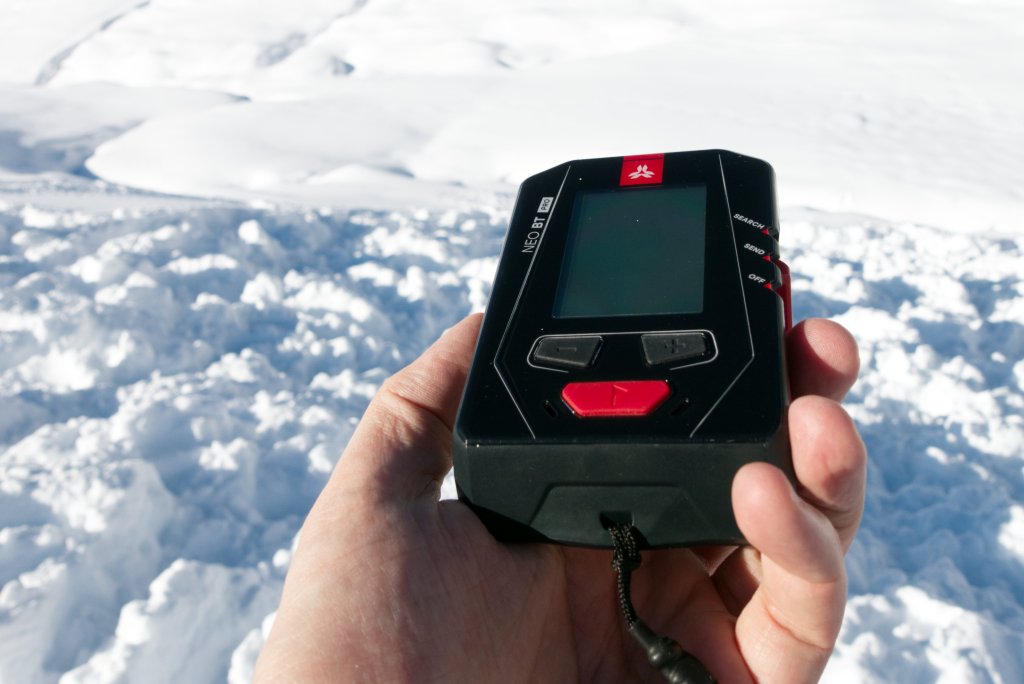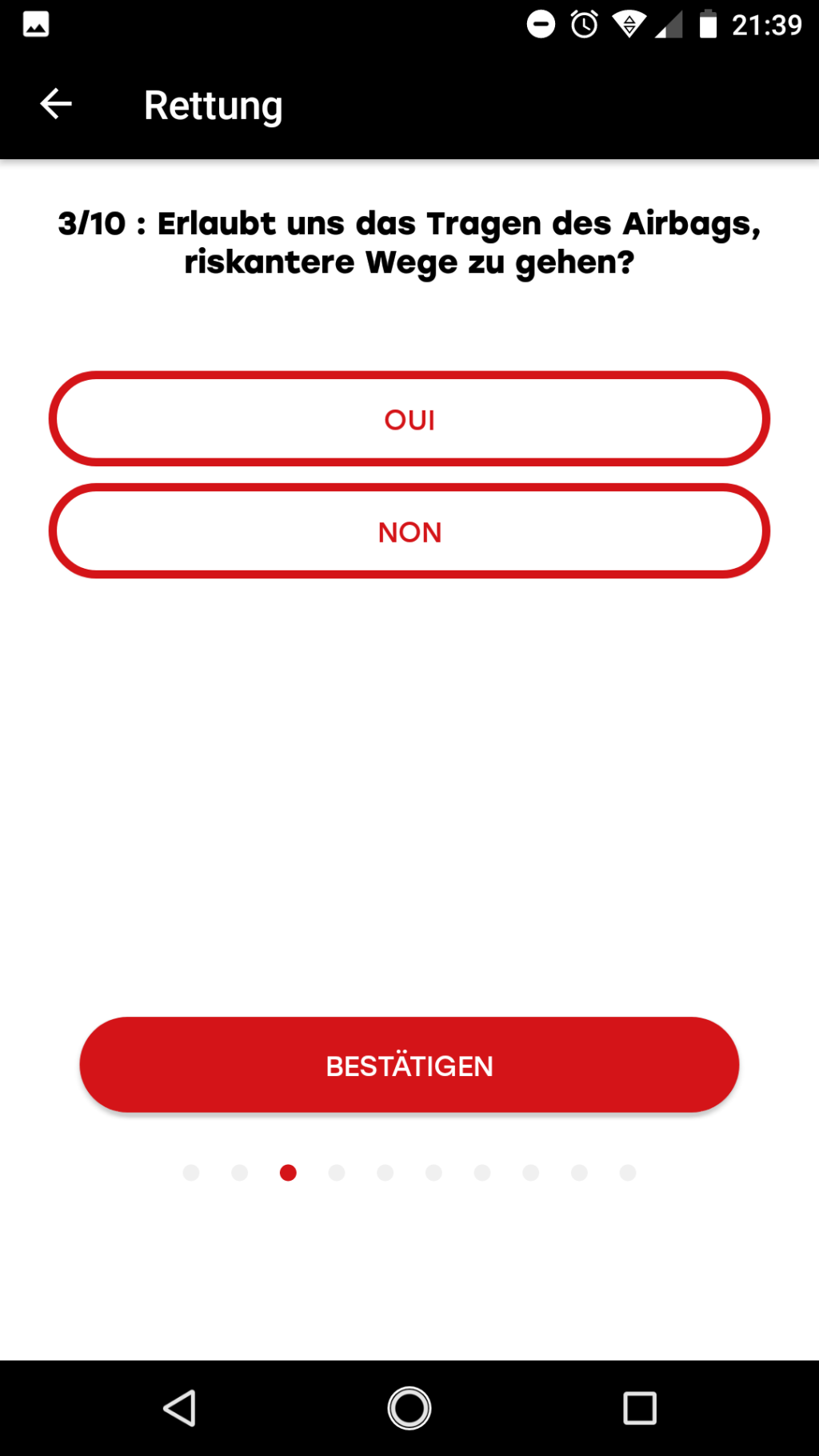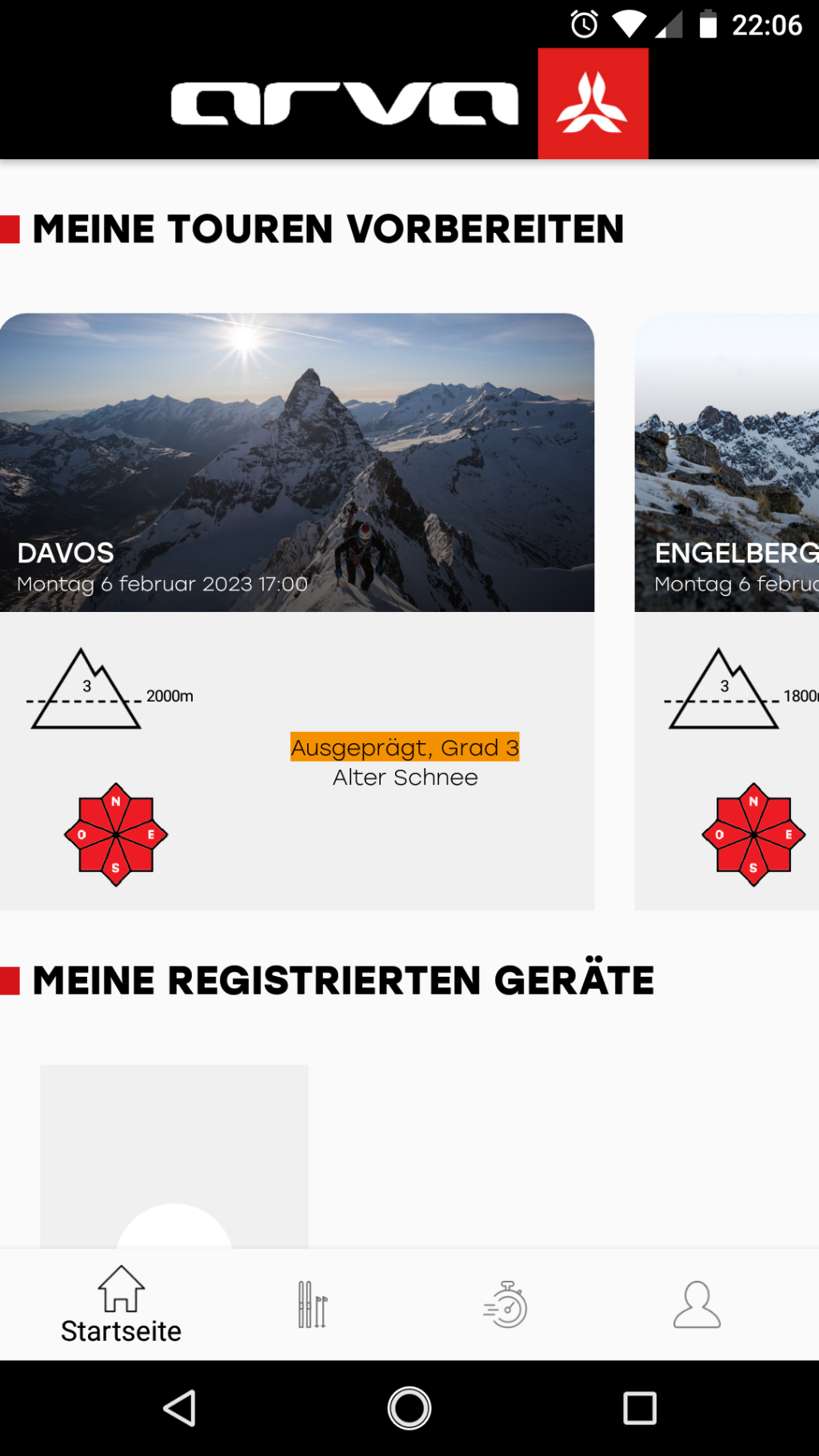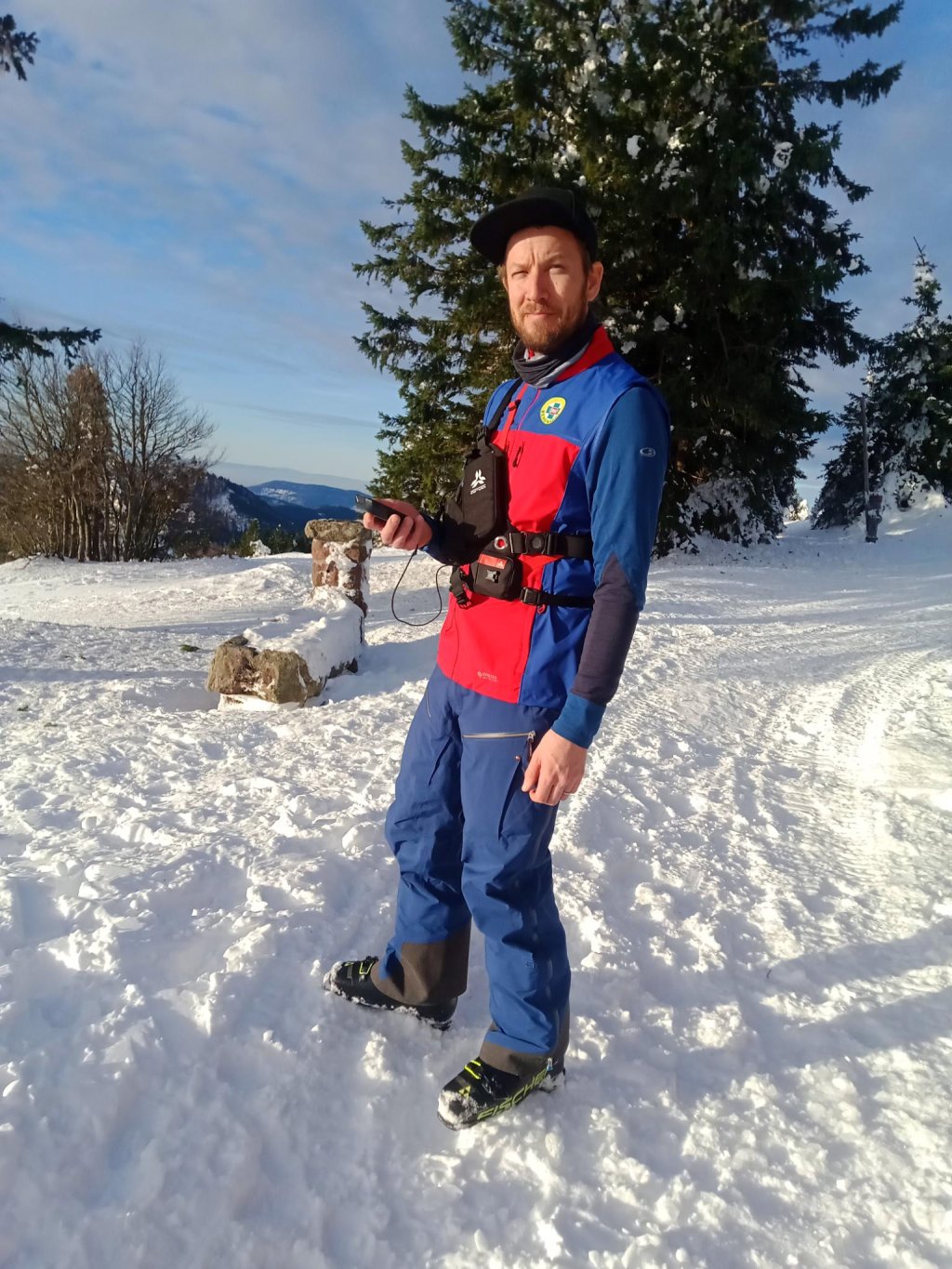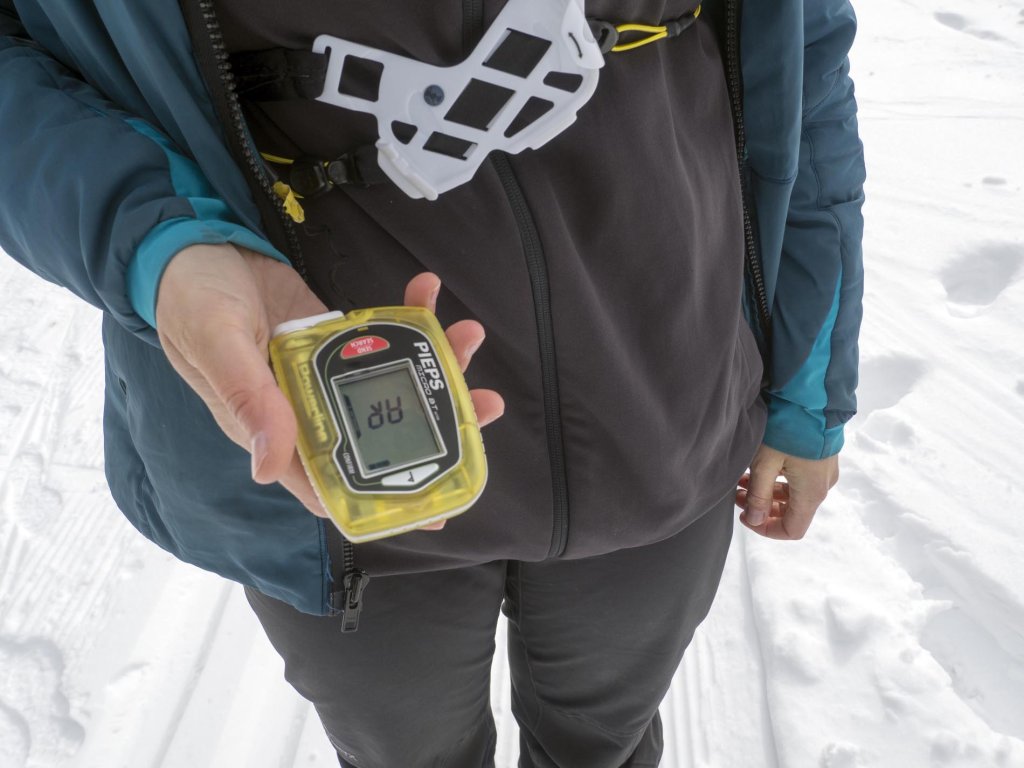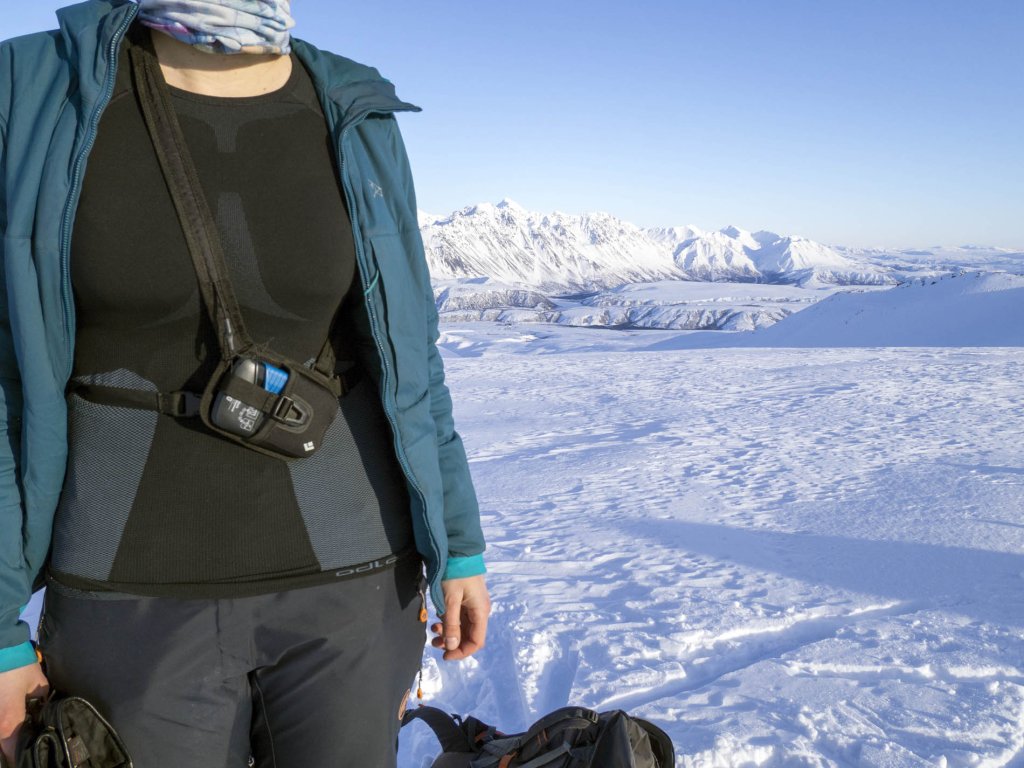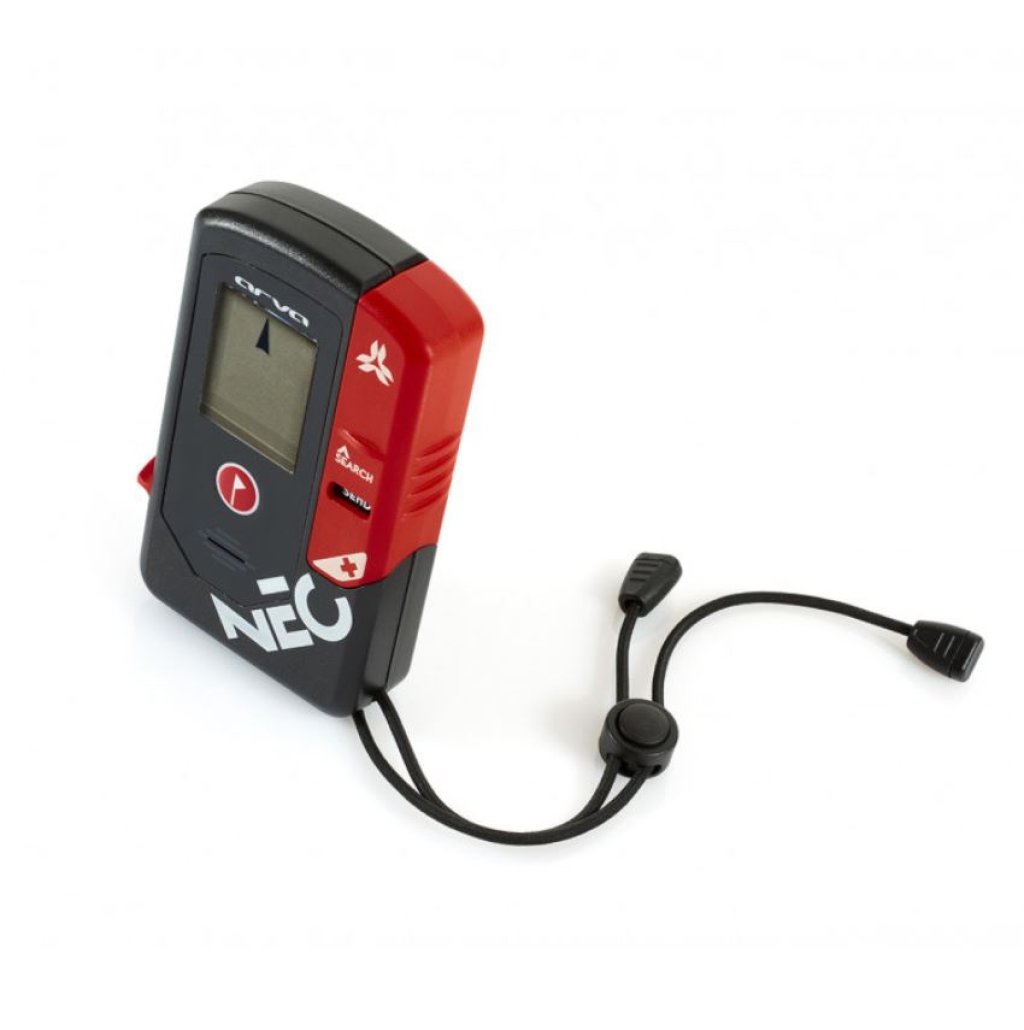ARVA introduced the ARVA 4000, the first French avalanche transceiver, back in 1985. The device, which was exclusively analogue and only had a single antenna, did not yet have a screen and ideally had a range of around 20 metres. What was innovative back then seems like a relic from a long-forgotten era compared to the technology in the new ARVA Neo BT Pro.
First impression
Visually, the NEO BT PRO is simple and discreetly unobtrusive in the typical ARVA colours. The operating options also fit in well with the overall package and appear practice-orientated. With its angular design, the device sits very comfortably in the hand and can be operated easily even when wearing gloves. I particularly like the slider on the side, which you can easily move into the desired position. Although there are lighter avalanche transceivers, including those from ARVA, the NEO BT PRO weighs just 214g and promises an enormous range of features. The 80 metre search strip width specified by the manufacturer certainly stands out.
Test report
The avalanche transceiver was tested in different situations with different test criteria. At the beginning, the focus was on handling and, of course, the core function of an avalanche transceiver - searching. I have traditionally been practising avalanche transceiver searches with my children for several years now. As we didn't have the necessary snow this time, two avalanche transceivers were hidden in molehills both in the chalet and outside. We used two Mammut avalanche transceivers, the Mammut Barryvox S and the Mammut Element Barryvox, which we would later use as a reference. At 3.5 cm by 5 cm, the NEO BT PRO display is nice and large and well lit. This is also noticeable in very bright sunlight, as you can see everything that is shown on the display with or without ski goggles.
